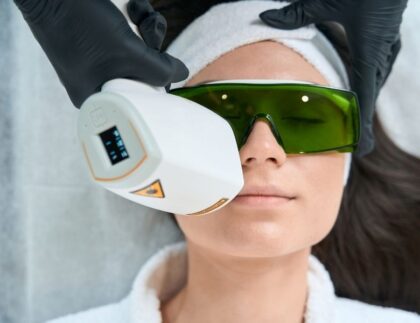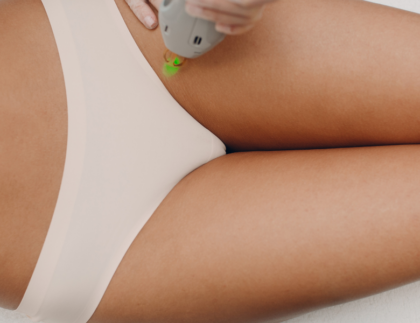
Darkening along the bikini line is a common concern for many people, especially those who regularly shave, wax, or use hair removal creams. This discoloration, often caused by friction, irritation, and inflammation, can be frustrating. While it’s not a medical issue, hyperpigmentation can affect confidence, especially in warm months when swimsuits and summer wardrobes are part of daily life.
One increasingly popular solution is laser hair removal. Known for its long-term hair reduction benefits, it also raises an important question: can it help prevent the darkening of the bikini line? Many people exploring laser hair removal in Annandale, VA are curious about this topic.
Laser hair removal does more than just reduce hair growth over time. It may also reduce some factors contributing to darkened skin in the bikini area. To understand how this treatment may help, it’s important to first understand what causes the discoloration in the first place.
What Causes Bikini Line Discoloration?
Bikini line darkening, or post-inflammatory hyperpigmentation (PIH), usually occurs when the skin experiences repeated irritation. Common triggers include shaving, waxing, friction from clothing, and even certain chemical hair removal products. Each of these actions can cause micro-injuries to the skin. As the skin heals, it may produce excess melanin in response, leading to dark patches.
Hormonal changes, genetics, and skin type can also influence how much pigment the skin produces during the healing process. Those with medium to dark skin tones are often more prone to visible hyperpigmentation, making prevention especially important.
How Laser Hair Removal Works
Laser hair removal targets the pigment in hair follicles using concentrated light energy. The laser heats and damages the follicle enough to reduce future hair growth. Over time, with multiple sessions, the treated hair becomes finer and eventually stops growing altogether.
Because the treatment targets hair follicles without damaging surrounding skin when performed correctly, it can reduce the need for other hair removal methods that typically cause irritation.
Reducing Friction and Irritation
One of the biggest benefits of laser hair removal is the reduction in daily or weekly grooming. Shaving and waxing cause mechanical friction and inflammation, which directly contribute to discoloration. By reducing hair growth, laser treatments lower the need for these irritating routines.
Less hair also means reduced friction in the bikini area from clothing or physical activity. The result is less trauma to the skin and fewer chances for post-inflammatory hyperpigmentation to develop.
Preventing Future Hyperpigmentation
While laser hair removal doesn’t directly lighten existing dark spots, it can help prevent new ones from forming. Fewer ingrown hairs, less shaving, and minimal skin trauma all contribute to healthier, more even-toned skin over time. Many patients find that their bikini line looks smoother and more uniform after completing a series of treatments, not because the laser lightens the skin, but because it removes the triggers that cause darkening in the first place.
It’s worth noting that results vary by skin tone, hair color, and the settings used on the laser device. An experienced technician can tailor treatment to your skin’s needs, reducing risks and optimizing results.
Aftercare Is Just as Important
Proper aftercare plays a significant role in maintaining an even skin tone after laser treatment. Avoiding sun exposure, using soothing and hydrating skincare products, and following your provider’s instructions will help your skin heal properly between sessions.
Using broad-spectrum sunscreen on the treated area, even if it’s usually covered by clothing, is essential. UV rays can worsen pigmentation, especially on sensitive, healing skin.
What to Expect with Multiple Sessions
Laser hair removal is not a one-and-done solution. It typically takes six to eight sessions spaced several weeks apart to achieve noticeable hair reduction. While the results are long-lasting, maintenance sessions may be needed once or twice a year, depending on your hair growth cycle.
Many patients begin noticing softer, less irritated skin even after just a few sessions. The gradual reduction in shaving and waxing allows the skin to rest and recover, minimizing the causes of pigmentation over time.
When to Seek Professional Advice
If you’re experiencing bikini line darkening and considering treatment, a consultation with a licensed laser technician or dermatologist is a smart first step. They can assess your skin type, determine the underlying cause of pigmentation, and recommend a tailored treatment plan.
Laser hair removal may not be suitable for everyone, especially those with very light hair or certain medical conditions. A professional evaluation ensures safety and effectiveness.
Laser hair removal offers more than just smoother skin. It helps prevent many of the issues that lead to bikini line discoloration. By reducing hair growth, it limits the friction, ingrown hairs, and repeated irritation that often result in dark patches. While it won’t directly bleach or lighten the skin, it can break the cycle that causes discoloration in the first place.
If you’re tired of shaving irritation or uneven skin tone and looking for a long-term solution, laser hair removal in Annandale, VA may be the answer. Book your consultation with Denude today to learn more about safe, professional treatment options tailored to your skin.









